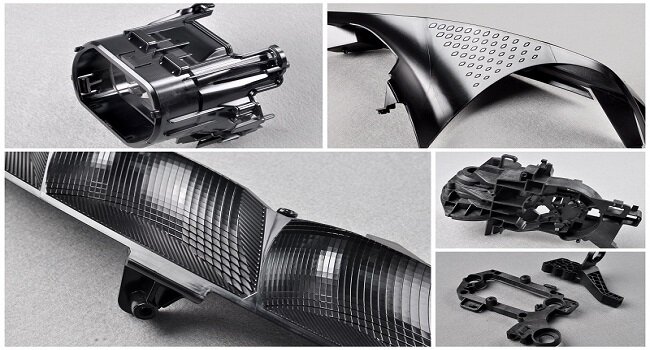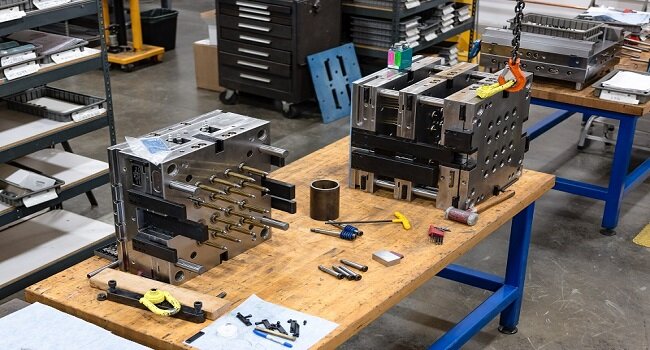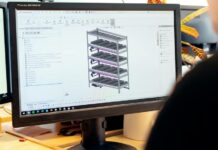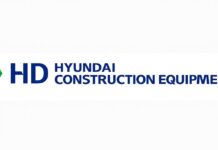The draft angles are used in the rapid tooling services process for easy ejection of the molded parts from the mold. A part may be formed precisely without a draft angle but it helps to avoid the issues during the ejection of the part from the mold. The importance of the draft angle and guidelines regarding design are provided in this article.
What a draft angle is?
To remove the injection molded parts from the mold with ease, the angles are provided to the different sides of the part. These angles are known as draft angles. The draft angles are measured in degrees with reference to the vertical axis of the mold. The draft angles are required to be provided in almost every part that is being formed by the injection molding except the parts where the friction is very low. These angles are made such that the part slides out of the mold easily without any hindrance. The draft angle is in the range of 1 to 5 degrees, depending upon the material properties and part design. It is lower for smooth surfaces and higher for textured surfaces. It depends on different parameters like wall depth, wall thickness, surface texture, type of materials, and shrink rate.
Why draft angles are important?
To reduce the risk of damaging the molded part and for ease of removing from the cavity, the draft angles are imperative. The draft angles are substantial to ensure the quality standards of the part being formed, to remove the ejection issues, to reduce the wear & tear, and decrease unnecessary lead time.
When the plastic is injected into the mold in the molten state, it starts cooling down and also shrinks which may result in the separation of some material from the wall of the mold. It would cause friction between the part and the mold. It may also affect the surface finish and can damage the surface of the mold. To avoid these issues, the draft angle is provided on different sides of the parts. With the addition of a draft angle, the molded parts easily move out of the mold without affecting the surface of the mold.
The best practices when planning draft angles
The following paragraphs indicate some of the important industry-wide adopted factors regarding draft angles that are incorporated in an efficient design and development process of parts through injection molding.
1. The draft should be provided in the initial design phase
The draft should be provided to CNC machining company from the start of the design phase to avoid any difficulty during the prototyping or manufacturing. This will not only save time but also save resources during the subsequent design iterations.
2. A draft angle of 1.5 to 2 degrees is commonly used
This rule is applicable for injection molded parts of depth up to 2-in. For this size, the draft angle of 1.5 degrees will allow the easy ejection of the molded parts from the mold without any damage.
3. One degree increase of draft angle for 1-in additional depth
As the depth of the part increases, the surface area will increase, and thus the friction will also be higher. To overcome this problem, greater draft angles should be provided to the parts for deeper or bigger parts. Mostly, the angle is increased by 1 degree with an increase of 1-in depth.
4. Higher draft angle for the textured surface
The textured surfaces tend to stick more with mold than the plain surface which will create additional friction to the ejection of the injection molded part from the mold. To avoid this issue, a higher draft angle is required for the molded parts. Normally, a draft angle of 3 degrees is provided in case of light texture and 5 degrees in case of heavy texture.
5. The draft should occur towards the “top” of the mold
For the easy removal of the part from the mold, the draft angle should be such that the bottom of the mold is less wide than the open top of the mold. The variation in the width of the part due to the draft angle should be such that it increases in the direction of ejection of the molded part.
6. All parts are required to be drafted
All those parts/sides that are in contact with the mold should be drafted for the easy removal of molded parts from the mold.
7. Draft both sides of the parts
Depending upon the nature of designs, the draft angle may be required on both sides of the parts like in solid cylinders where the parting line is in middle for the molded part.
8. Molding operations of metal-on-metal surface
In the case of the metal surface separation from the metal, it is recommended to add 3 degrees of draft angle.
9. 0.5 degrees of a draft angle for vertical surfaces
Even for the parts with vertical surfaces, it is recommended to add 0.5 degrees of draft angle for easy removal of the molded part and also meet the quality standards of the injection molding processes.

10. Any draft is better than no draft
Some designers may be reluctant to add draft angles to their design, under the assumption that the part will easily eject from the mold without any damage. But it may not be true in most cases. Even if the designer is not willing to add 1 degree of draft angle per 1-inch depth of the mold, the addition of 0.5 degrees will be favorable for easy removal of the molded part from the mold. So, to provide a few degrees of draft angle in the design is always better than the zero-degree draft.
The draft angle should be considered as an integral part of mold design for manufacturing through injection molding. For high quality and successful production of the parts, a draft angle must be incorporated into the design. It will reduce the wear & tear of the parts and the risk of damaging the expensive molds during production. It will also save the manufacturing time that may be wasted in absence of draft angle during the removal of complex parts from the molds.
How does the draft affect part’s finish?
During the ejection of parts from the mold, as the parts drag on the molded surface, scratches appear on the surface of the parts. Due to the shrinkage of molten material during the cooling in the mold, the surface tension is created which creates additional hurdles in the easy removal of molded parts. In textured surfaces, these scratches are more common in comparison with the polished surface. Hence, draft angles in parts with textured surfaces require special attention. With an increment in surface roughness, higher draft angles are needed. If the draft is not designed correctly and efficiently, the part may not be able to be ejected easily from the mold or may damage the expensive mold. The recommended draft angle value for a low textured surface and highly textured surface is 3 degrees and 5 degrees, respectively.
Conclusion

For the production of high-quality parts through injection molding efficiently, it is necessary to incorporate draft angles in the design. Failure to follow the aforementioned practices regarding draft angle incorporation may result in damaging the parts/mold, creating hindrance in the ejection of the molded parts, failure to meet the quality standards, and increasing the manufacturing time.






























